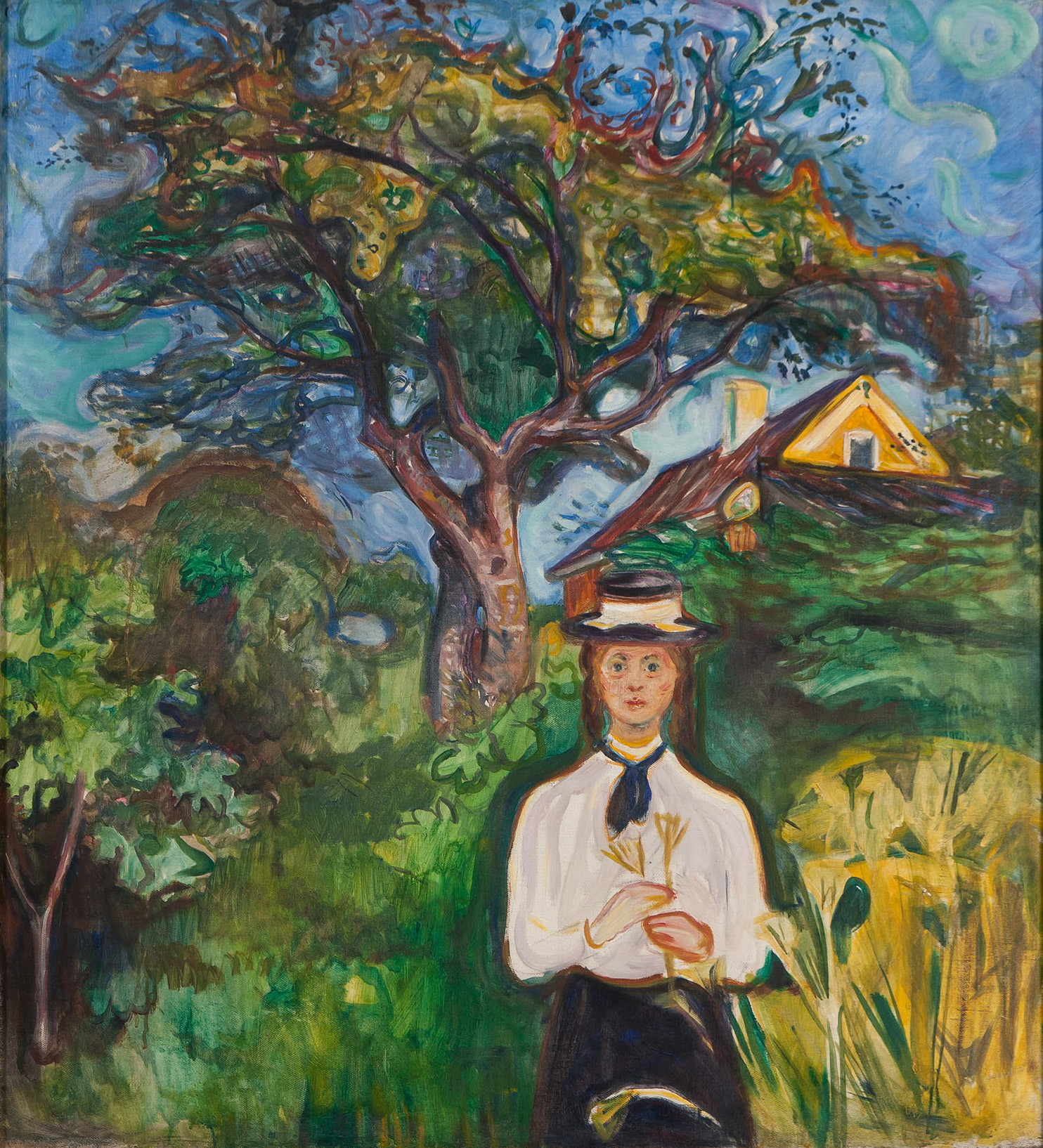The Cultivated Landscape
 Edvard Munch, Girl Under Apple Tree, 1904, oil on canvas. Carnegie Museum of Art, acquired through the generosity of Mrs Alan M. Scaife and family, 65.16, © Artists Rights Society (ARS), New York
Edvard Munch, Girl Under Apple Tree, 1904, oil on canvas. Carnegie Museum of Art, acquired through the generosity of Mrs Alan M. Scaife and family, 65.16, © Artists Rights Society (ARS), New YorkMunch’s paintings of cultivated landscapes reflect his keen interest in human interaction with nature. These motifs were drawn from the fertile coastal peninsula around the Oslofjord where he owned several properties. Reflecting a horticultural boom in Norway, at his various homes Munch created flower and kitchen gardens, planted fruit trees, cultivated orchards, and kept animals such as hens, ducks, and horses. The artist regarded his gardens and fields as places of refuge, overflowing with life. They can also be understood as liminal zones between nature and civilization and as symbols of fertility and rejuvenation. During a time when Norwegian agriculture was undergoing modernization and mechanization, Munch depicted traditional small-scale farming practices, celebrating the farmer’s “simple” way of life.
